Sea Otter
- March 21, 2024
- 0 comment
Sea otters, often regarded as one of the most charismatic marine mammals, inhabit the coastal waters of the North Pacific Ocean. Renowned for their endearing antics and charming demeanor, these captivating creatures hold a special place in both ecological and cultural realms. With their dense fur, remarkable adaptations, and playful behavior, sea otters play a vital role in maintaining the health of nearshore marine ecosystems.
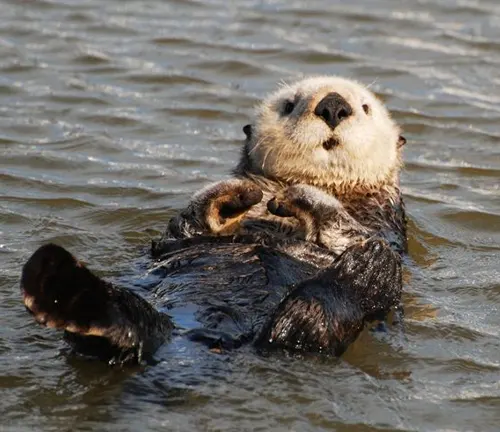
From their crucial function as keystone species, regulating populations of sea urchins and preserving kelp forests, to their significance in supporting local economies through ecotourism, sea otters embody resilience and adaptability in the face of ongoing threats such as habitat loss, pollution, and climate change.
Despite historical exploitation that nearly drove them to extinction, conservation efforts have helped some populations rebound, emphasizing the importance of continued vigilance and stewardship to ensure the survival of these beloved marine mammals for generations to come.
Sea Otter Characteristics
| Specification | Details |
|---|---|
| Scientific Name | Enhydra lutris |
| Family | Mustelidae |
| Habitat | Coastal waters of the North Pacific Ocean |
| Range | From California to Alaska, and parts of Asia |
| Size | Adult males: 50 to 100 pounds (23 to 45 kilograms) |
| Adult females: slightly smaller | |
| Length | Up to 4 feet (1.2 meters) |
| Fur | Dense, waterproof coat |
| Adaptations | Excellent swimmers, tool users |
| Diet | Carnivorous, feeds on marine invertebrates |
| such as clams, mussels, crabs, and sea urchins | |
| Social Structure | Solitary, but may form loose aggregations |
| Mothers and pups exhibit strong bonds | |
| Gestation Period | Approximately six months |
| Offspring | Typically give birth to a single pup |
| Conservation Status | Threatened or endangered in some areas |
| Importance in Ecosystem | Keystone species, helps regulate prey populations |
| Preserves health of kelp forests | |
| Threats | Habitat loss, pollution, entanglement in fishing gear |
| Predation by sharks and orcas | |
| Conservation Efforts | Habitat restoration, monitoring populations |
| Implementing regulations to mitigate human impacts | |
| Economic Value | Contributes to local economies through ecotourism |
Sea otters are captivating marine mammals known for their playful demeanor and unique adaptations. Found along the coasts of the North Pacific Ocean, these creatures are integral to their ecosystems and hold a significant place in both ecological and cultural contexts.
Habitat and Distribution
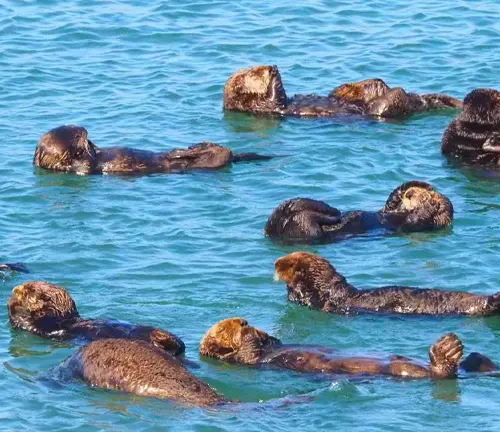

The habitat and distribution of sea otters are primarily centered around coastal waters of the North Pacific Ocean. These marine mammals are typically found along the rocky coastlines, kelp forests, and estuaries of North America and Asia. In North America, sea otters inhabit regions stretching from California in the United States to Alaska and parts of Canada. Along the eastern coast of Russia, sea otters can be found in areas such as the Kuril Islands. Their preferred habitats include nearshore marine environments with abundant food resources, such as shellfish beds and kelp forests. Sea otters are rarely found in open ocean waters, preferring areas with shallow depths and proximity to shorelines where they can forage for food and seek shelter. Their distribution within these habitats can vary based on factors such as prey availability, water temperature, and human activities. Despite historical declines due to hunting and habitat loss, conservation efforts have helped some populations recover and expand their range in recent years. However, ongoing threats such as pollution, habitat degradation, and conflicts with human activities continue to impact sea otter populations and their habitats.
Physical Characteristics
Size and Weight
Sea otters are one of the smallest marine mammals, with adult males typically weighing between 50 to 100 pounds (23 to 45 kilograms). Adult females are slightly smaller than males. In terms of length, sea otters can reach up to 4 feet (1.2 meters). Despite their relatively small size, sea otters have a robust build and thick layer of blubber, which helps insulate them from cold waters.


Fur
Sea otters possess the densest fur of any mammal, with up to one million hairs per square inch. Their fur consists of two layers: a dense underfur and longer guard hairs. This fur serves multiple purposes, including insulation against cold water, buoyancy to help them float, and protection from the elements. Sea otters spend a significant amount of time grooming their fur to maintain its insulating properties and keep it free from dirt, debris, and parasites. The quality and health of their fur are crucial for their survival in their marine habitat.
Behavior and Adaptations
Feeding Habits
Sea otters are carnivorous marine mammals with a diverse diet consisting primarily of marine invertebrates. They are skilled hunters, known for their proficient foraging abilities. Sea otters primarily feed on a variety of prey species, including clams, mussels, crabs, sea urchins, and various other shellfish. They use their dexterous forepaws to locate, capture, and manipulate their prey, often diving to the ocean floor to search for food. Sea otters play a crucial role in controlling populations of prey species, which helps maintain the health and balance of marine ecosystems.
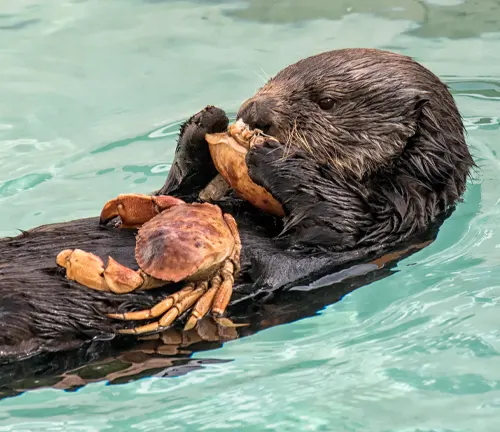
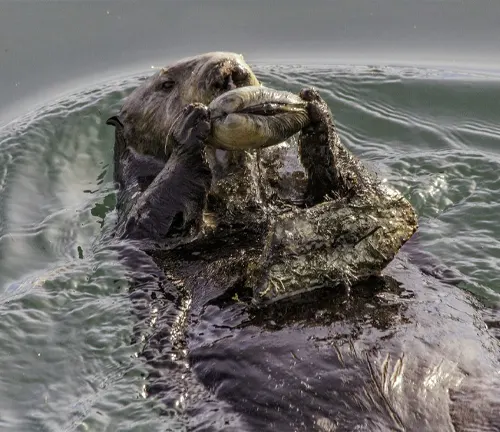
Tool Use
One of the most remarkable aspects of sea otter behavior is their adeptness at using tools. Sea otters are one of the few non-human species known to use tools in their daily activities. They frequently use rocks and other objects to break open the shells of prey such as clams and shellfish. This behavior demonstrates their intelligence, adaptability, and problem-solving skills. Sea otters select suitable tools and employ them with precision, showcasing their ability to innovate and learn.
Social Structure
While sea otters are generally solitary animals, they may form loose aggregations, especially during certain activities such as feeding or resting. Mothers and their pups exhibit a strong bond, with females providing extensive care for their young. Female sea otters often raise their pups alone, with males playing no role in parenting. Additionally, sea otters may occasionally form larger groups known as rafts, particularly during mating season or while resting. However, these aggregations are typically transient, and sea otters spend much of their time foraging and moving independently in their marine habitat.
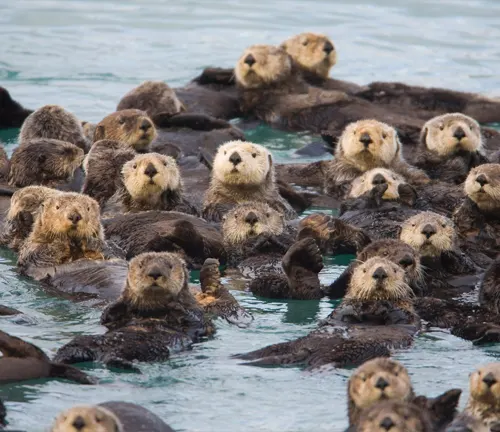
Reproduction and Life Cycle
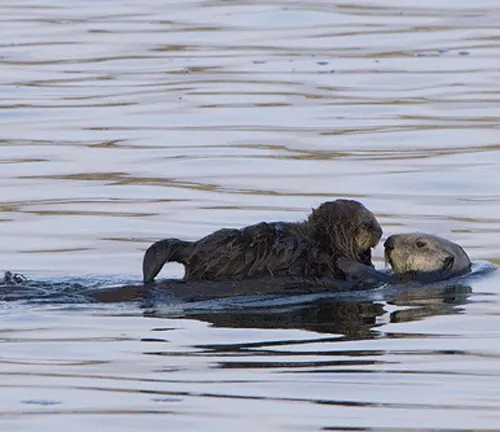
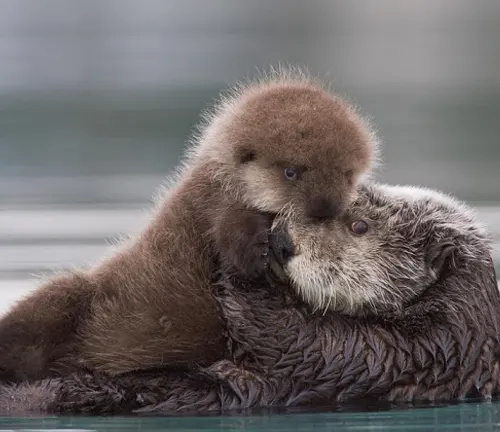
Sea otters have a unique reproductive and life cycle adapted to their marine environment. Mating typically occurs in the water, with males pursuing females during the breeding season. After a gestation period of around six months, females give birth to a single pup. Newborn sea otter pups are precocial, meaning they are relatively well-developed at birth and rely on their mothers for nourishment and protection.
Mother sea otters provide extensive care for their pups, nursing them and teaching them essential survival skills such as foraging and grooming. Pups remain dependent on their mothers for several months, gradually learning to forage for food and becoming more independent as they grow older.
As the pup matures, it learns to swim and dive, honing its hunting skills and adapting to its marine environment. Sea otters reach sexual maturity at around two to four years of age, depending on factors such as sex and environmental conditions.
The life expectancy of sea otters varies, with individuals in the wild typically living for about 10 to 15 years. However, some sea otters have been known to live longer, especially in captivity where they may receive medical care and protection from natural predators.
Conservation Status
The conservation status of sea otters varies depending on their geographic location and population. Overall, sea otters are classified as “threatened” or “endangered” in many regions due to past exploitation and ongoing threats to their survival.
Historically, sea otters were heavily hunted for their fur, leading to dramatic population declines and local extinctions. By the early 20th century, they were nearly wiped out across much of their range. However, conservation efforts such as protective regulations and habitat restoration have helped some populations recover in recent decades.
Currently, sea otters face numerous threats to their survival, including habitat loss, pollution, entanglement in fishing gear, oil spills, and conflicts with human activities. Climate change poses additional challenges, altering their habitats and impacting prey availability.
As a result of these threats, sea otters are listed as threatened or endangered under various conservation frameworks, including the International Union for Conservation of Nature (IUCN) Red List and the U.S. Endangered Species Act. Efforts to protect and conserve sea otters involve a combination of measures, including habitat restoration, monitoring populations, implementing regulations to mitigate human impacts, and raising awareness about the importance of these marine mammals in ecosystems.
Threats and Challenges
Sea otters face a multitude of threats and challenges that jeopardize their survival and well-being in their marine habitats. These threats stem from both natural and human-induced factors and require concerted conservation efforts to address effectively.
- Habitat Loss: Coastal development, pollution, and habitat degradation due to human activities threaten the availability and quality of suitable habitats for sea otters. Loss of critical habitat can limit their access to food resources and shelter, impacting their overall health and survival.
- Pollution: Pollution from various sources, including runoff from urban areas, industrial activities, and agricultural runoff, contaminates marine environments and poses significant risks to sea otters. Chemical pollutants, such as oil, pesticides, and heavy metals, can accumulate in their bodies, leading to adverse health effects and reproductive issues.
- Entanglement in Fishing Gear: Sea otters are vulnerable to entanglement in fishing gear such as nets, lines, and traps, which can result in injury or death. As bycatch in commercial fisheries, sea otters may become trapped or entangled in gear intended for other species, leading to drowning or debilitating injuries.
- Oil Spills: Oil spills pose a severe threat to sea otters by contaminating their fur, impairing its insulating properties, and causing hypothermia. Oil pollution also affects their prey populations and habitat, leading to long-term ecological impacts on marine ecosystems.
- Predation: Predators such as sharks and killer whales (orcas) pose a threat to sea otters, particularly vulnerable individuals such as pups or injured adults. Predation pressure can influence sea otter behavior and habitat use, affecting their distribution and population dynamics.
- Disease Outbreaks: Sea otters are susceptible to disease outbreaks, including infectious diseases transmitted through waterborne pathogens or contaminated prey. Disease outbreaks can have devastating effects on sea otter populations, leading to mortality events and population declines.
- Climate Change: Climate change poses significant challenges for sea otters by altering their habitat and impacting prey availability. Rising sea temperatures, ocean acidification, and changes in weather patterns can disrupt marine ecosystems, affecting the abundance and distribution of prey species critical for sea otter survival.
Conservation Efforts
Conservation efforts aimed at protecting sea otters and their habitats are crucial for ensuring the long-term survival of these charismatic marine mammals. These efforts involve a combination of strategies focused on habitat conservation, population monitoring, and mitigating human impacts.
- Habitat Restoration: Restoration initiatives aim to restore and enhance coastal habitats critical for sea otter survival, including kelp forests, estuaries, and rocky shorelines. These efforts may involve replanting kelp beds, restoring coastal wetlands, and reducing habitat degradation from human activities.
- Population Monitoring: Monitoring sea otter populations is essential for assessing population trends, identifying threats, and informing conservation strategies. Researchers use techniques such as aerial surveys, satellite tracking, and genetic monitoring to monitor sea otter populations and track their movements and health status.
- Regulatory Measures: Implementing regulations and policies to protect sea otters and their habitats is vital for reducing human impacts and promoting sustainable management practices. Measures may include establishing marine protected areas, implementing fishing gear restrictions, and regulating coastal development activities to minimize habitat disturbance.
- Community Engagement: Engaging local communities, stakeholders, and indigenous groups in sea otter conservation efforts fosters stewardship and promotes conservation awareness. Community-based initiatives may include educational outreach programs, citizen science projects, and partnerships with local organizations to promote responsible stewardship of marine resources.
- Research and Innovation: Investing in scientific research and technological innovation is essential for advancing our understanding of sea otter ecology, behavior, and conservation needs. Research initiatives may focus on topics such as disease ecology, habitat preferences, and the impacts of climate change on sea otter populations.
- International Collaboration: Collaborating with international partners, conservation organizations, and government agencies is crucial for addressing transboundary conservation challenges and promoting coordinated conservation efforts across sea otter range countries. International agreements and partnerships facilitate information sharing, capacity building, and collaborative conservation initiatives aimed at protecting sea otters and their habitats on a global scale.
Importance of Sea Otters in Ecosystems
Sea otters play a crucial role in maintaining the health and balance of coastal marine ecosystems, earning them the designation of a keystone species. Their presence has far-reaching effects that ripple throughout the ecosystem, influencing the abundance and distribution of various species and habitats.
- Regulating Prey Populations: Sea otters are voracious predators of marine invertebrates such as sea urchins, crabs, and clams. By controlling the populations of these prey species, sea otters prevent overgrazing on kelp forests and other critical habitats. This, in turn, promotes the health and diversity of marine ecosystems by maintaining the balance between predators and prey.
- Preserving Kelp Forests: Kelp forests are one of the most productive and biodiverse ecosystems in the ocean, providing essential habitat and food for numerous marine species. Sea otters play a key role in preserving kelp forests by controlling populations of herbivorous species that graze on kelp, such as sea urchins. In the absence of sea otters, overgrazing by sea urchins can decimate kelp forests, leading to habitat loss and a decline in biodiversity.
- Enhancing Biodiversity: By maintaining the health of kelp forests and other marine habitats, sea otters support a diverse array of species, including fish, invertebrates, and other marine mammals. Healthy ecosystems with high biodiversity are more resilient to environmental changes and disturbances, making sea otters essential for promoting ecosystem stability and resilience.
- Carbon Sequestration: Kelp forests are also effective carbon sinks, sequestering carbon dioxide from the atmosphere and storing it in biomass and ocean sediments. By preserving kelp forests, sea otters indirectly contribute to climate change mitigation efforts by enhancing carbon sequestration and reducing greenhouse gas emissions.
- Supporting Commercial Fisheries: Healthy marine ecosystems supported by sea otters provide essential habitat and food resources for commercially valuable fish species. By maintaining the health and productivity of coastal ecosystems, sea otters indirectly support commercial fisheries and the livelihoods of coastal communities that depend on them.
Human Interaction
Historical Exploitation
Sea otters have a long history of exploitation by humans, dating back to the 18th and 19th centuries when they were hunted extensively for their luxuriant fur. The demand for sea otter pelts, prized for their warmth, softness, and water-repellent properties, led to a period of relentless trapping and hunting known as the “fur trade.” Sea otters were hunted to the brink of extinction in many regions, particularly along the coasts of North America and Asia. The fur trade decimated sea otter populations, leading to local extinctions and severe population declines across their range. By the early 20th century, sea otters had disappeared from many areas where they were once abundant.
Economic Value
Sea otters hold significant economic value through their role in supporting coastal ecosystems, fisheries, and tourism industries. By regulating prey populations and maintaining the health of kelp forests and other marine habitats, sea otters indirectly contribute to the productivity and sustainability of commercial fisheries. Healthy ecosystems supported by sea otters provide essential habitat and food resources for commercially valuable fish species, contributing to the livelihoods of coastal communities dependent on fishing.
Ecotourism and Education
Sea otters play a vital role in promoting ecotourism and environmental education initiatives aimed at raising awareness about marine conservation and the importance of preserving coastal ecosystems. Ecotourism activities focused on sea otters provide opportunities for visitors to learn about their biology, behavior, and ecological significance while fostering a deeper appreciation for marine biodiversity and conservation efforts.
Educational programs, interpretive exhibits, and guided tours offered by ecotourism operators and conservation organizations provide valuable opportunities for people of all ages to engage with sea otters and learn about the interconnectedness of marine ecosystems. By fostering connections between people and nature, these initiatives inspire stewardship and conservation action, empowering individuals to become advocates for marine conservation and sustainable management practices.
Sea Otters in Popular Culture
Sea otters have captured the hearts and imaginations of people around the world, becoming iconic symbols of marine wildlife and conservation. Their playful antics, endearing appearance, and charismatic personalities have inspired a wide range of cultural depictions and representations in popular culture, including literature, art, film, and advertising.
Sea otters have been featured prominently in children’s books, animated films, and television shows, portraying them as lovable characters beloved by audiences of all ages. Their portrayal in popular media often highlights their playful nature, close family bonds, and important role in marine ecosystems, helping to raise awareness about their conservation status and the threats they face in the wild.
In addition to their presence in children’s entertainment, sea otters are also celebrated in art and literature, with artists, writers, and photographers capturing their beauty and vitality in various forms of creative expression. From paintings and sculptures to poems and novels, sea otters continue to inspire artists and storytellers, leaving a lasting legacy in the cultural imagination.
Different Species
Northern Sea Otter
(Enhydra lutris lutris)
Found in the North Pacific Ocean along the coasts of Alaska, Canada, and Russia.


Southern Sea Otter
(Enhydra lutris nereis)
Inhabits the coastal waters of California, United States, particularly around the Monterey Bay area.
Russian Sea Otter
(Enhydra lutris kenyoni)
Found along the eastern coast of Russia and the Kuril Islands.

Frequently Asked Questions (FAQs)
- What do sea otters eat?
Sea otters primarily feed on marine invertebrates such as clams, mussels, crabs, and sea urchins. They are known for their impressive foraging skills and use their dexterous forepaws to locate and capture prey. - How do sea otters groom themselves?
Sea otters spend a significant amount of time grooming their fur to maintain its insulating properties. They use their teeth and forepaws to remove dirt, debris, and parasites from their fur, often floating on their backs while grooming. - How do sea otters reproduce?
Sea otters mate in the water, and females give birth to a single pup after a gestation period of around six months. Mothers provide extensive care for their young, nursing them and teaching them essential survival skills. - What is the lifespan of a sea otter?
Sea otters typically live for about 10 to 15 years in the wild, although some individuals may live longer in captivity. Factors such as predation, disease, and human activities can influence their lifespan. - Do sea otters have any natural predators?
Yes, sea otters face predation from sharks, particularly great white sharks, as well as killer whales (orcas). These predators may target sea otters, especially young or injured individuals
. - How do sea otters communicate?
Sea otters communicate through a variety of vocalizations, including chirps, whistles, and growls. They also use body language, such as grooming and posturing, to convey information to other otters. - Are sea otters endangered by oil spills?
Yes, oil spills pose a significant threat to sea otters by contaminating their fur, which compromises its insulating properties and can lead to hypothermia. Oil pollution also affects their prey and habitat. - Can sea otters live in freshwater habitats?
Sea otters are primarily found in coastal marine environments, but they may occasionally inhabit estuaries or areas where freshwater meets the sea. However, they rely on marine resources for food and are not typically found in freshwater habitats. - Are sea otters territorial?
Sea otters do not have strict territories but may defend areas where they forage or rest, particularly females with pups. They may exhibit aggressive behaviors towards intruders or competitors, especially during mating season. - How do sea otters sleep?
Sea otters often sleep while floating on their backs at the water’s surface, using their chest as a platform to rest their head and limbs. This position allows them to conserve energy while remaining alert to potential threats.


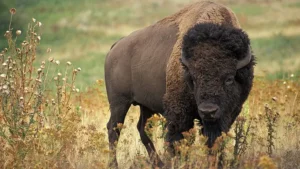

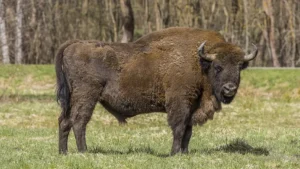

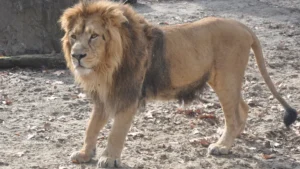
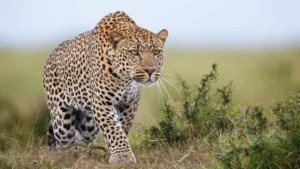
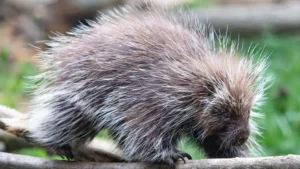




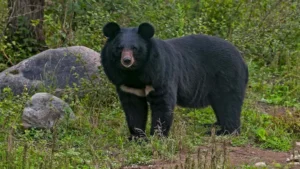
Leave your comment